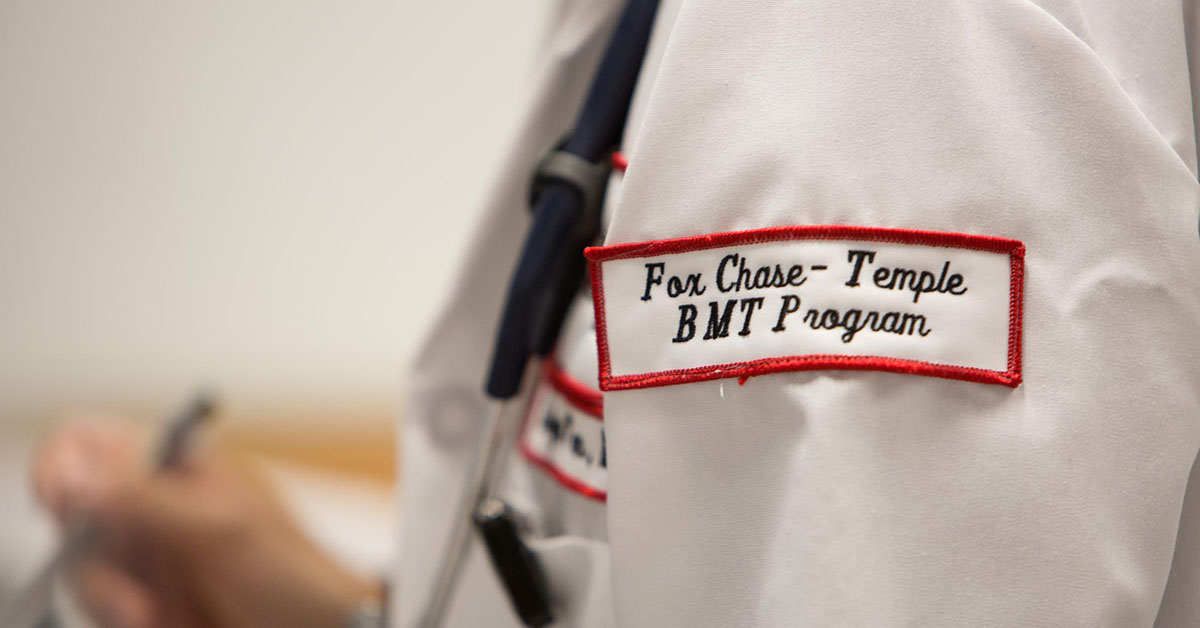
Overall Survival Rates at Bone Marrow Transplant Centers: Why They Matter
-
Bone marrow transplants (also known as stem cell transplants) are hailed as life-saving procedures for certain types of cancers (multiple myeloma, acute leukemia, and advanced lymphoma, to name a few). But they’re also incredibly complex—and that’s why it’s worth seeking out a transplant center with an established record of exceptional survival success.
The Fox Chase –Temple University Hospital Bone Marrow Transplant Program’s performance for one-year survival is above the expected survival rate for transplant procedures for the second year in a row, according to a recent analysis. In fact, the Fox Chase – Temple University Hospital Bone Marrow Transplant Program was the only adult center in the tri-state area (Pennsylvania, New Jersey, and Delaware) to achieve this distinction—and just one of 17 adult centers nationwide.
These important rankings come from a risk-adjusted analysis performed by the Center for International Blood & Marrow Transplant Research (CIBMTR), which analyzes the annual performance success of each of the 172 transplant centers in the United States. “This is like a report card for bone marrow transplant centers. Everyone counts on this data,” explained Henry Fung, MD, FACP, FRCPE, Fox Chase Chair of the Department of Bone Marrow Transplant and Cellular Therapies.
How Fox Chase ranked—and why
All U.S. transplant centers are required by federal law to submit patient survival data each year. CIBMTR uses this data to determine the average expected one-year survival outcome of transplant patients, as well as risk-adjusted outcomes based on factors like age, race, donor type, the details of their transplant, and other co-morbidities.
From those expected outcomes, CIBMTR ranks the actual one-year survival rates for each transplant center. Some centers meet the average, while those whose survival rates are below average are ranked as “under-performing.” The centers whose one-year survival rates are better than the expected average are ranked as “over-performing.”
Fox Chase’s transplant program was one of the select few centers to rank as over-performing in both 2019 and 2020. The actual 1-year survival rate for Fox Chase patients receiving their first allogenic transplant was 82.1%, this year’s analysis concluded. That’s compared to CIBMTR’s expected 1-year survival rate of between 62.4% and 79%.
Fox Chase has earned its elite over-performing distinction for two years running, both in 2019 and 2020. “Our success comes from a combination of strong leadership, a specially trained team of expert transplant physicians and nurses, and a multidisciplinary approach that addresses every aspect of a transplant patient’s needs,” Fung said.
But that’s not all. Bone marrow transplant patients need continued care and support long after their transplant is complete and they head back home. “The best way to ensure that,” Fung explained, “is by taking a personalized approach that ensures caregivers and physicians in a patient’s community have the knowledge and tools to continue delivering the right post-transplant treatment.”
“We don’t just abandon a patient once they finish treatment at Fox Chase,” Fung said. “We work with community physicians, providing the advice for them to take care of the patients close to home.”
In other words, we know that the long-term success of a bone marrow transplant requires a long-term commitment. Our program gives patients the individualized care they need while at Fox Chase—as well as after they leave our hospital.
Learn more about the Fox Chase – Temple University Hospital Bone Marrow Transplant Program.
